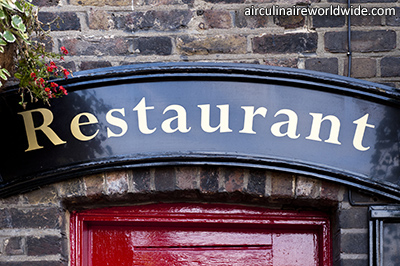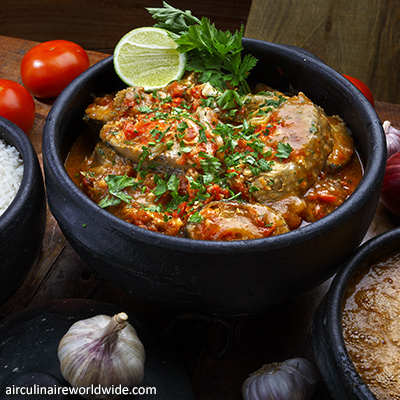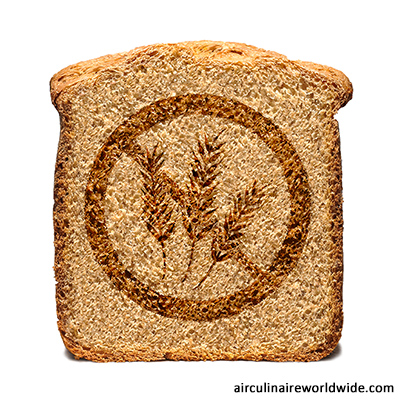Think of free food and the chance to show off your culinary knowledge… Then think of bad meals and weight gain. So, given that it is as much chore as treat, what do you think the point is of restaurant reviews? Moreover, should critics be foodies or writers?
Forget being custodian of a tropical island; surely being a restaurant critic is the best job in the whole wide plate-licking world. Up there with chocolate sampler or luxury hotel sampler.
First up for consideration is the fact that you run the risk of putting on serious weight. Even worse: your employer will not provide a budget for a personal trainer. All this combined would suggest a job with a severely limited life-cycle. Present incumbents regularly retire the field to spend time with family and join strict diet programs, which makes way for the next generation of hungry writers with lower BMIs (Body Mass Index).
Not so, say some critics, before reeling off a litany of quasi-complaints.
Eating out is work, they moan. As Alison Arnett, former Boston Globe critic, told ABC News: “What most people think of as a treat becomes a job, and it is very relentless.” The majority of meals are mediocre. Instead, the job of a restaurant critic appears to be one with some rather enviable tenure. Gael Greene occupied her post at New York magazine for over three decades. Marina O’Loughlin graced the pages of Metro for 13 years, before taking up her current gig with Guardian Weekend. Moreover, at the London Evening Standard, Fay Maschler recently celebrated 40 years of reviews, having penned her first in 1972.
Now, let’s be clear. It is not that we, “Joe Public,” don’t understand that every job comes with its trials and tribulations (even if it does not come with truffles). It’s just that any attempt made by food critics to convince us that their job isn’t a bed of rosewater macarons is a bit like, well, corporate bankers bemoaning their 18-hour days or Premier League footballers grumbling about the punishing fixture list.
Unfortunately, restaurant reviewing, an oft-cited “dream gig,” is a market harder to crack than a giant caramel tuile. In preparation for his recent Guardian Masterclass, Jay Rayner issued the following sobering advice to aspiring food writers: “Let me be clear: the restaurant critic’s job is very hard to come by. Most of us – me, Giles Coren, Matthew Norman, A. A. Gill, John Walsh, Tracey McLeod – wrote about anything and everything before being offered the post, and still do. There are fewer than a dozen of those jobs in the country, and only a couple pay a proper wage.”
Still, the expense account and free meals for friends must soothe their hurt somewhat. Particularly in the U.S., where multiple visits to the same restaurant are de rigueur, ostensibly in order to deliver an unimpeachable judgment. In her memoir “Garlic and Sapphires,” Ruth Reichl recounts dining at upmarket Le Cirque – current dinner menu: $125 (£79) for four courses – a grand total of five times, before handing out a contentious three stars out of four. Tom Sietsema, Washington Post restaurant critic, is obliged “to go to places three times before rating them,” resulting in an estimated $70,000 (£44,000) spend, personally and professionally, on dining out each year.
Meanwhile, U.K. critics labour under a much different model. The Guardian and Observer allow their critics a single visit with one other person in tow. Enough to form a (witty) opinion? Clearly though, O’Loughlin has been known to occasionally hand over her own hard-earned cash for a second visit to get a fuller impression. “Costs me a fortune,” she says, “but since it [eating in restaurants] is still, after all these years, what I’d rather do most in the world, I can deal with it.”
U.K. and U.S. editors also differ in their views of what determines a great restaurant critic. Here in Shakespeare’s country, it is all about the wordsmith. Rayner lays it out in his missive: “My job is to write, not to know stuff about food (though, being a greedy man, I do know a lot).” O’Loughlin concurs: “In terms of the big-name reviewers over here, it is often more about entertainment than being instructional. Which is why papers tend to employ ‘writers’ rather than ‘foodies.’”
Over in the U.S., it seems gastronomic knowledge takes first place. When Frank Bruni took up the post of New York Times food critic, he apparently “was not the obvious choice” and “lacked what the foodie establishment would regard as suitable credentials,” despite being “an exquisite writer,” according to executive editor Bill Keller in a message to staff when Bruni moved to a different desk.
As for Reichl, her rise from Berkeley commune living to celebrated New York Times critic, told over her several memoirs, is a grown-up food-lover’s fairy-tale. As she relates in her book “Tender at the Bone,” she was cooking at a collectively-owned restaurant when a customer (“an editor at a new San Francisco magazine”) asked her to “try out as our restaurant critic.” Cue her first ever review, and her editor’s verdict: “You were born to do this.”
Such is the deeply yearned-for fantasy of every food-obsessed writer-type out there. Sadly, the days of “professional” restaurant reviewing could be drawing toward the big “Closed” sign in the sky. US website Eater watches hawk-eyed as restaurant criticism becomes another “casualty in the demise of newspapers.” Gael Greene laments being “fired twice mid-forkful in less than four years,” just as she was “getting used to [her] modest expense.”
O’Loughlin takes a more upbeat view. “I’d say it has a life span beyond the much-touted death of print. As the Internet becomes increasingly screechy and chaotic, trusted voices will be more appreciated than ever.
Questions?
If you have any questions about in-flight catering in London, contact weborders@airculinaire.com.








